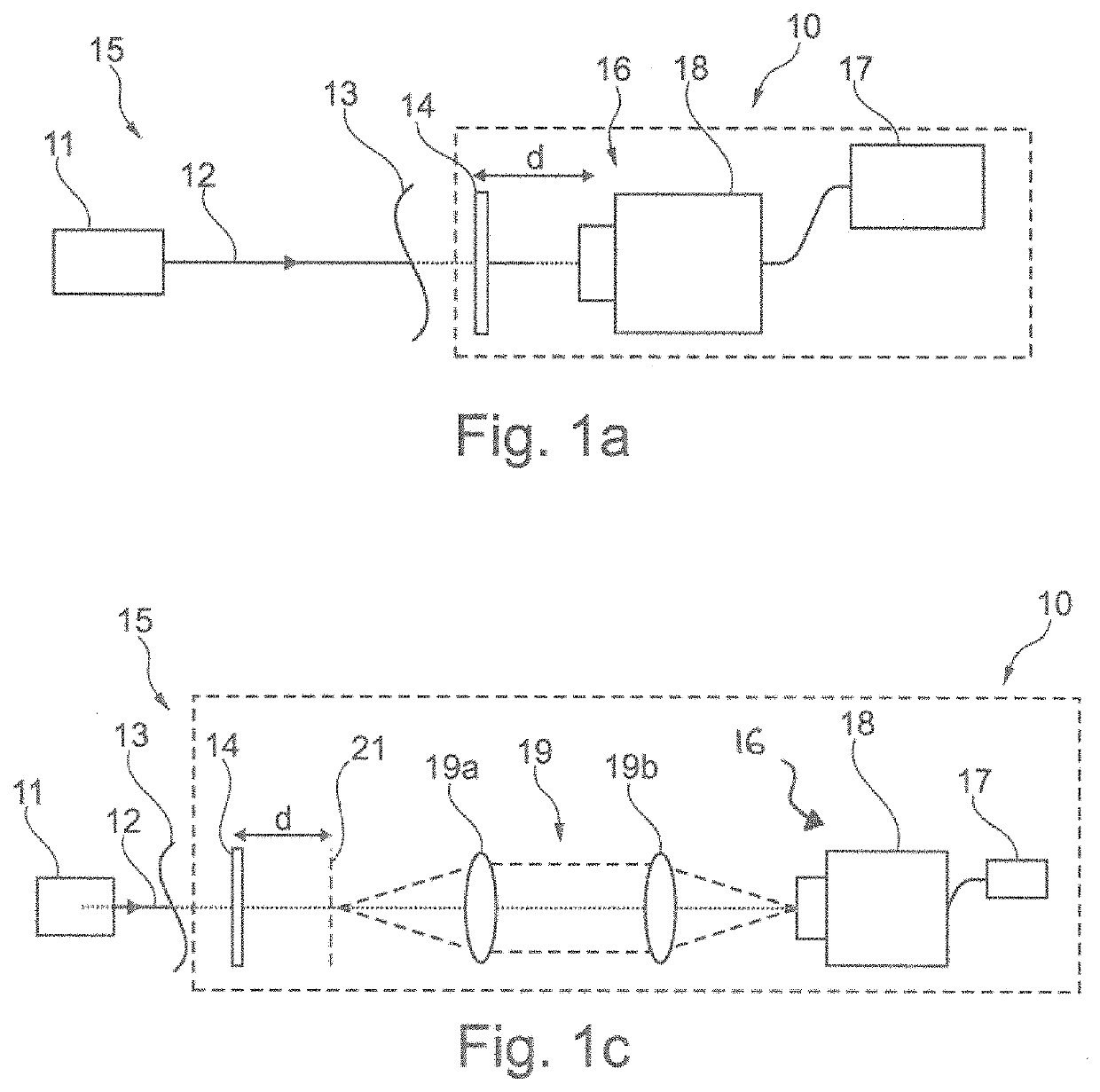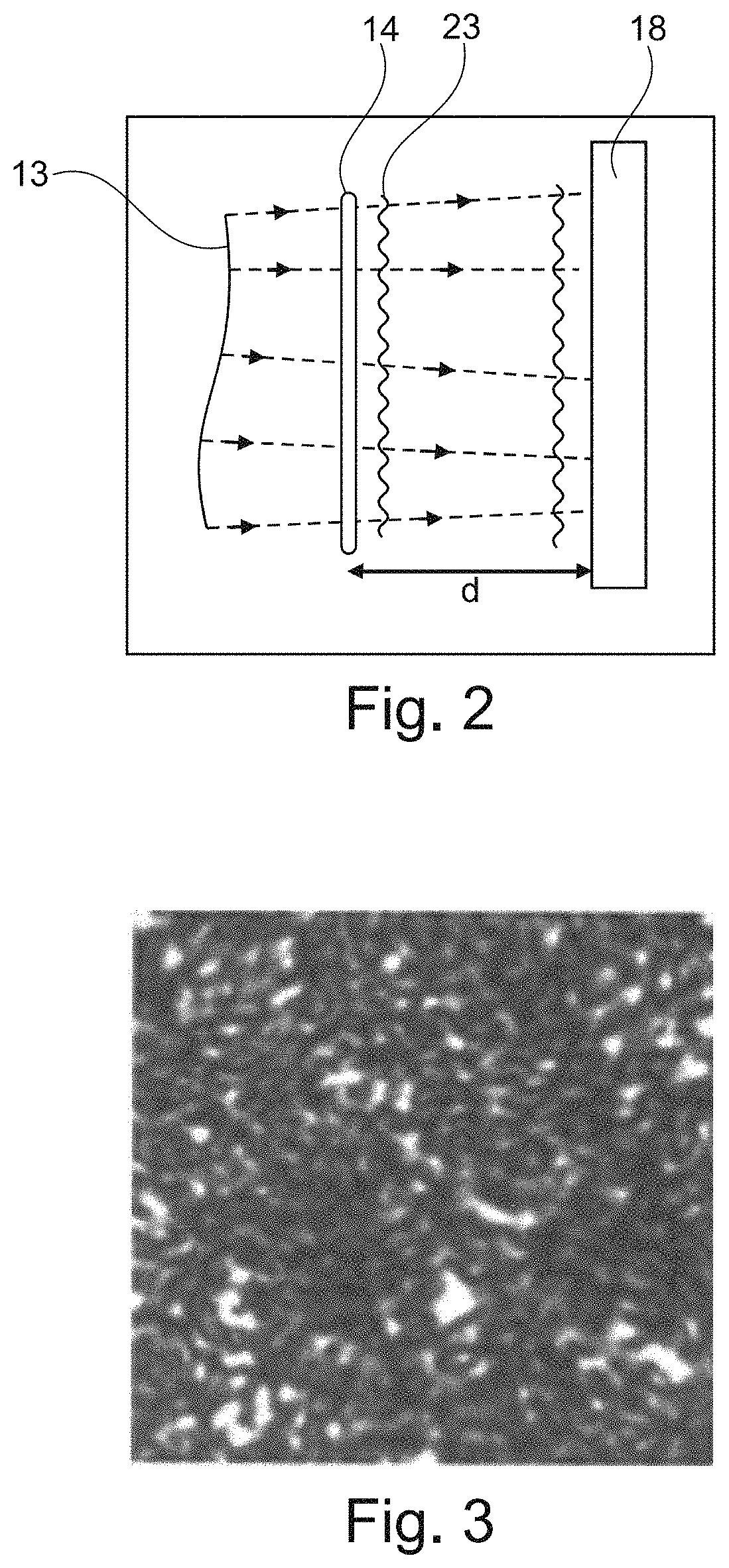Single-shot hyperspectral wavefront sensor
- Summary
- Abstract
- Description
- Claims
- Application Information
AI Technical Summary
Benefits of technology
Problems solved by technology
Method used
Image
Examples
Embodiment Construction
[0198]In an embodiment, a method according to the present invention relies on the specific properties of random intensity patterns generated by diffusers or more generally by an optical mask having the optical properties:
[0199]i) to cause the intensity pattern to depend on the wavefront shape, so that a tilt applied to the wavefront shape results in a displacement amount of the intensity pattern,
[0200]ii) to produce uncorrelated intensity patterns over at least one surface area A of the imaging sensor, for a plurality of respective incident monochromatic beams of different wavelengths having a same wavefront shape,
[0201]The principle is described below.
[0202]If two beams exhibit the same wavefront and the same intensity distribution, and only differ in their wavelength, the intensity patterns on the camera will be different. The similarity degree between two intensity patterns{sj}j=1,2, obtained at two different wavelengths depends on the spectral difference δA=λ1−λ2.
[0203]The degre...
PUM
 Login to View More
Login to View More Abstract
Description
Claims
Application Information
 Login to View More
Login to View More - R&D
- Intellectual Property
- Life Sciences
- Materials
- Tech Scout
- Unparalleled Data Quality
- Higher Quality Content
- 60% Fewer Hallucinations
Browse by: Latest US Patents, China's latest patents, Technical Efficacy Thesaurus, Application Domain, Technology Topic, Popular Technical Reports.
© 2025 PatSnap. All rights reserved.Legal|Privacy policy|Modern Slavery Act Transparency Statement|Sitemap|About US| Contact US: help@patsnap.com



